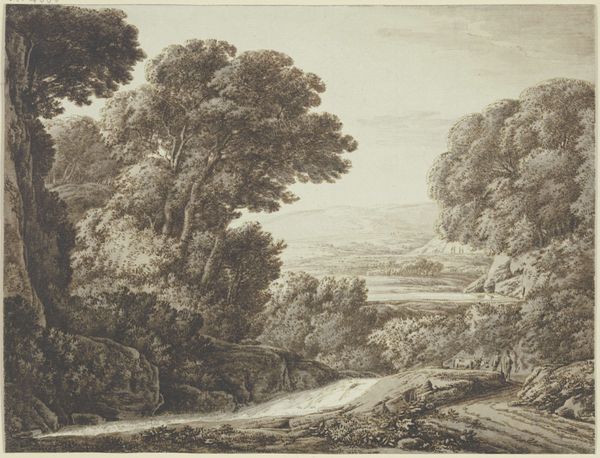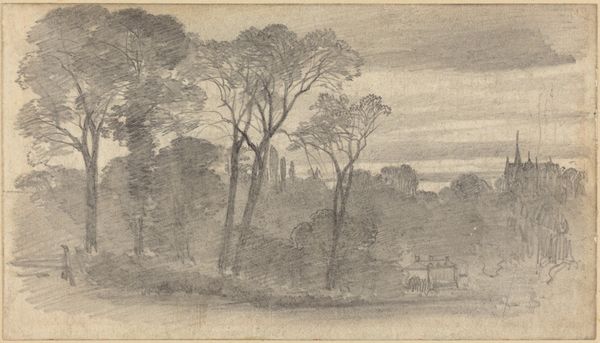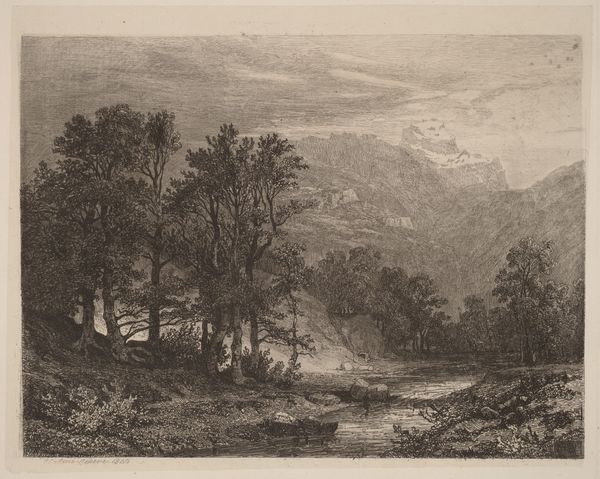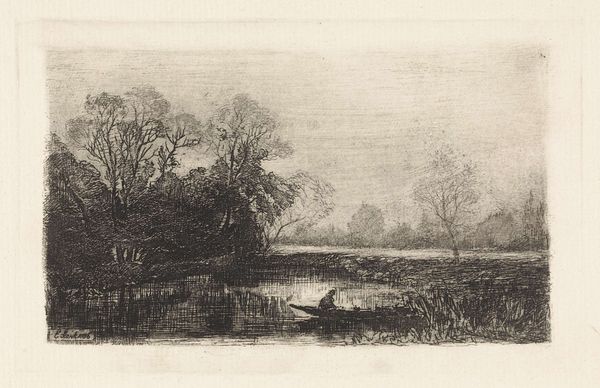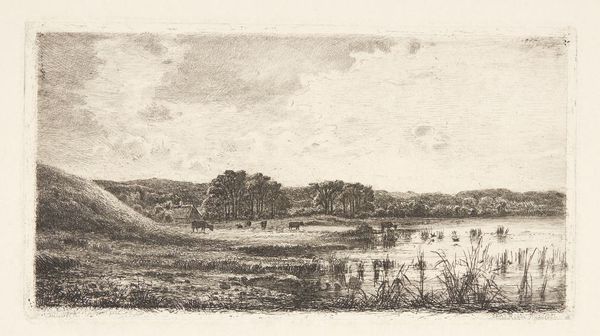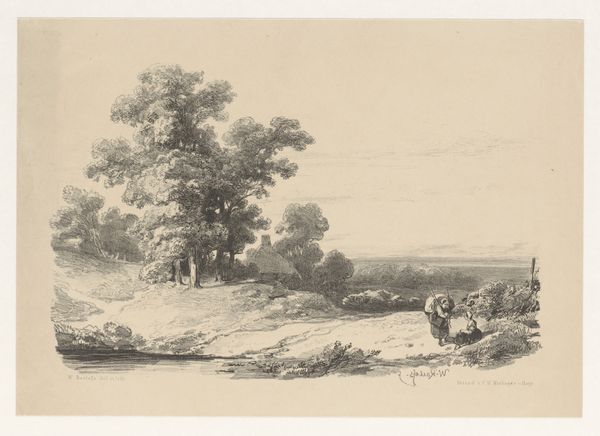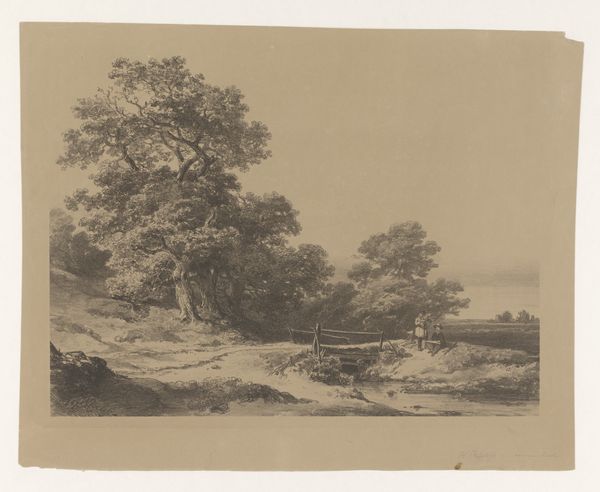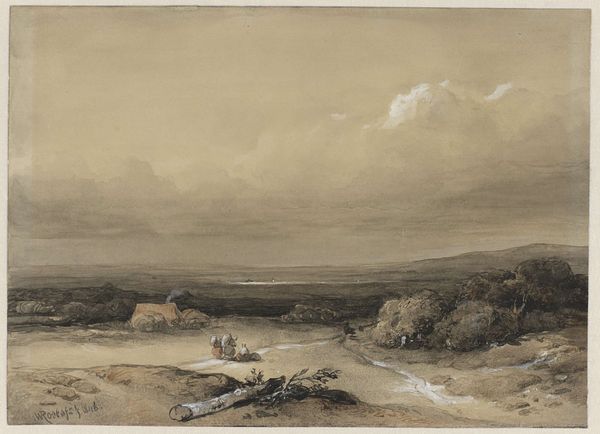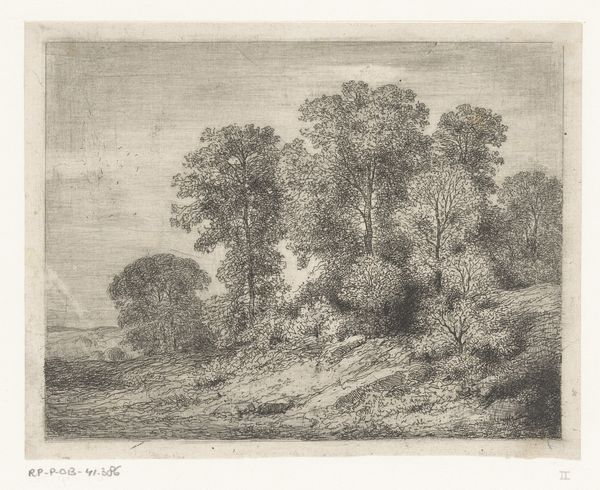
drawing, paper, ink
#
drawing
#
landscape
#
paper
#
ink
#
romanticism
#
realism
Dimensions: height 191 mm, width 259 mm
Copyright: Rijks Museum: Open Domain
Curator: This is Cornelis Lieste's "Landschap met rotsen bij water," a drawing rendered in ink on paper sometime between 1827 and 1861. Editor: It's melancholic, almost monochromatic, but in a way that evokes a deep sense of quiet observation. Curator: Lieste’s work reflects a Romantic sensibility, very typical of the landscape painting style of the time, focusing on evoking the emotional potential of the natural world. But what intrigues me are the very visible traces of his labor. You can almost follow his hand, the meticulous application of the ink washes on the paper support, and see how he builds up the forms and texture. It reminds me how physically involved art making used to be. Editor: Absolutely. Considering the broader societal context of his era, the romantic ideals become all the more relevant. This era championed emotional depth and individuality, at a time of great upheaval of social hierarchies, giving us an escape into landscapes such as this. The Romantic art and literature of the time become vehicles to critique and comment on contemporary norms and advocate for justice. This connects, even tangentially, to discussions about equity, representation, and freedom in art making, highlighting historical underrepresentation of marginalized voices within those established norms. Curator: And considering that this is a drawing—intimate, portable, reproducible— it challenges this high versus low art idea of value, especially when you remember that works on paper were so key for the development of new artistic practices. It allows the artist to share his work to wider audiences, to make available and to create connections with those that don't participate directly on high art patronage, and who may even been disenfranchised at the time. Editor: Precisely, and through a contemporary lens, we understand how art production reflects socio-political environments and affects cultural dialogue. We understand its impact when art makes an effort to bring underrepresented histories to the forefront in their artistic projects. Curator: Lieste’s landscape, thus, functions as a lens through which we can view not only the beauty of the natural world, but also the tangible labor involved in its creation and the historical values shaping its reception. Editor: Yes, this understated piece is more complex and interwoven into social concerns than initially meets the eye, providing rich historical perspective for ongoing contemporary conversations.
Comments
No comments
Be the first to comment and join the conversation on the ultimate creative platform.

